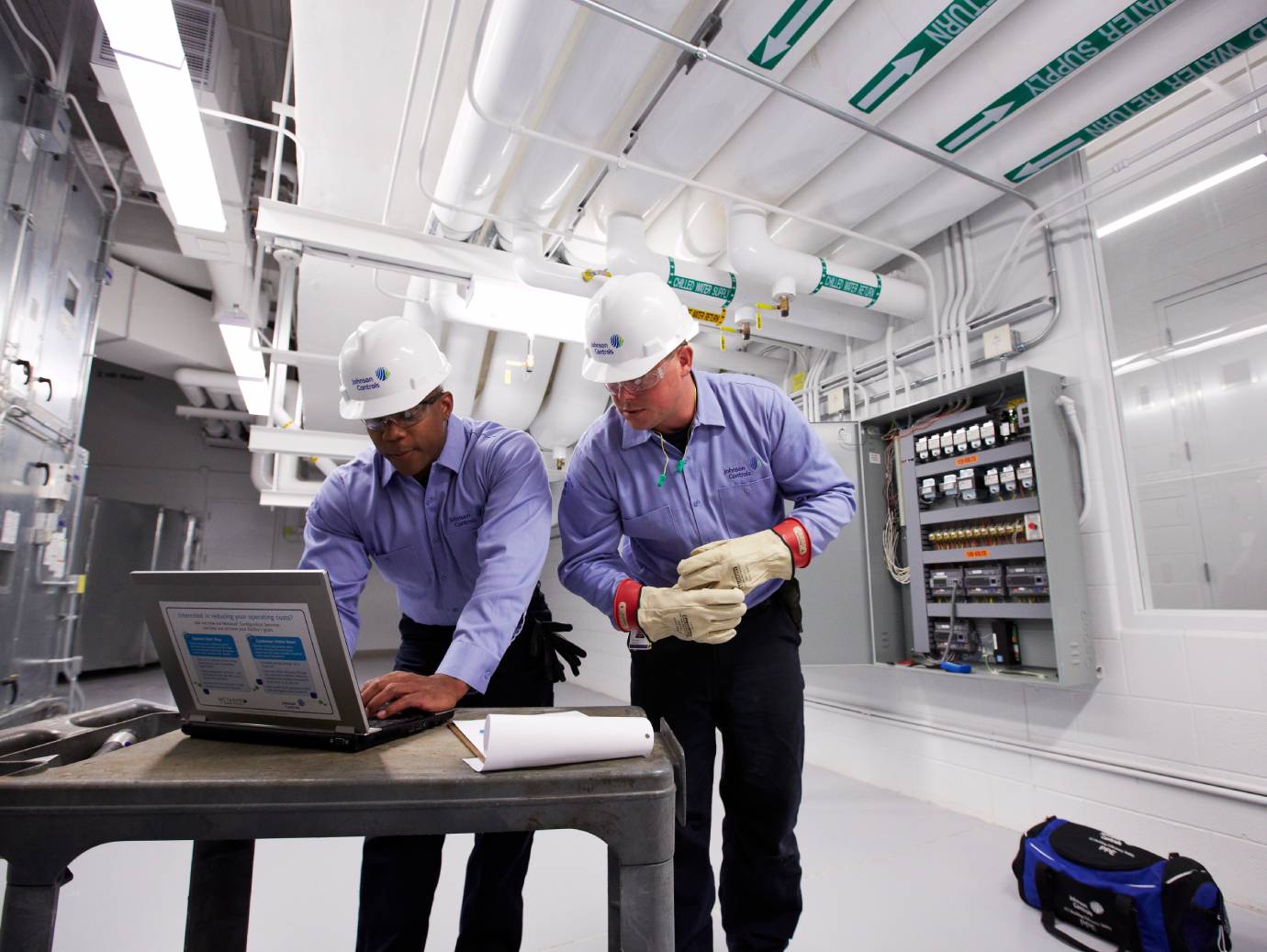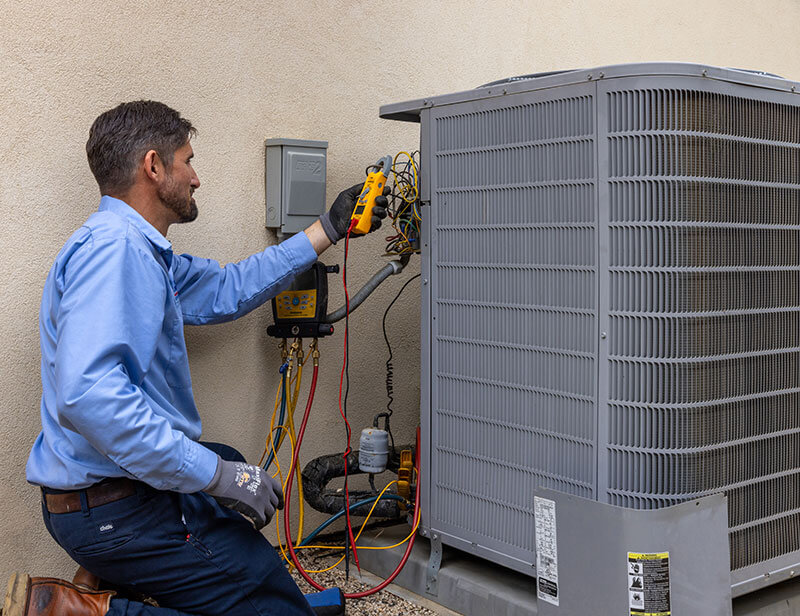Everything You Should Know Before Buying ductless mini splits
Everything You Should Know Before Buying ductless mini splits
Blog Article
Exactly How a Heatpump and Heater Collaborate to Optimize Your Home's Heating Efficiency
Understanding exactly how a heatpump and heating system collaborate is crucial for homeowners looking for efficient heating solutions. Each system has its strengths, supplying a well balanced technique to home comfort. The warmth pump succeeds in moderate temperature levels, while the furnace provides quick warmth during extreme cold. This synergy not just reduces energy costs yet also improves the lifespan of both appliances. What variables influence this collaboration, and how can property owners optimize their advantages?
Understanding Warmth Pumps: Just How They Work
Although lots of people might be not familiar with their inner operations, warmth pumps play an essential duty in contemporary furnace. These devices run by transferring warmth from one place to one more, making use of the principles of thermodynamics. In chillier months, a warm pump removes warm from the outdoors air, ground, or water, and transfers it inside to warm the space. On the other hand, throughout warmer months, it can reverse the procedure, serving as an ac system by expelling warm from inside to the outside.Heat pumps contain an evaporator, growth, condenser, and compressor shutoff. The cooling agent within the system absorbs warmth as it vaporizes at low temperatures and pressures. The compressor then boosts the stress and temperature level of the refrigerant, enabling it to launch warmth as it condenses. This efficient process can substantially lower energy intake compared to conventional home heating techniques, making heatpump a sustainable choice for climate control in homes.
The Duty of Furnaces in Home Heating
Heating systems play an important role in home heating by supplying a trustworthy source of heat during the cooler months. They run by generating warmth via burning or electrical resistance, dispersing it throughout the home via ducts or glowing systems. The efficiency of a heating system is usually gauged by its Yearly Fuel Utilization Efficiency (AFUE) rating, which indicates just how successfully the system converts fuel right into heat.Furnaces can use various energy resources, consisting of gas, lp, oil, or electrical energy, allowing homeowners to pick the most suitable alternative for their requirements. Unlike heatpump, which may struggle in severe chilly, heaters maintain regular efficiency, making sure that indoor temperatures remain comfy despite exterior problems. Additionally, modern-day furnaces typically come outfitted with sophisticated modern technology, such as clever thermostats and variable-speed blowers, enhancing their performance and responsiveness. This versatility makes heaters a critical element in comprehensive home heating methods.

Advantages of Utilizing Both Equipments With Each Other
Integrating the toughness of both furnaces and heat pumps can bring about a much more reliable and effective home heating remedy. Utilizing both systems allows homeowners to make use of the warmth pump's power performance during milder temperatures while relying upon the heater for even more extreme cold problems. This dual technique can significantly lower energy expenses, as warm pumps consume less electricity than standard heating methods when temperature levels are moderate.Additionally, making use of both systems with each other can improve convenience degrees in the home. Warmth pumps can provide consistent, also home heating, while heaters can rapidly increase ambient temperature levels when required. The integration of both systems can extend the lifespan of devices by lowering wear and tear on each device, as they share the work. Ultimately, home owners can enjoy a balanced, affordable home heating solution that adjusts seamlessly to varying climate problems, making certain a warm and welcoming home throughout the cold weather.
How Warmth Pumps and Furnaces Enhance Each Other
When property owners incorporate warmth pumps and heaters, they produce a complementary furnace that takes full advantage of effectiveness and convenience. Warmth pumps run by transferring warmth from the outdoors air or ground, making them extremely efficient in modest climates. They succeed during milder temperature levels, offering economical heating. On the other hand, heating systems generate warm through burning or electric resistance, supplying strong, immediate heat during severe cold conditions.The combination of these two systems permits dynamic changes based upon temperature changes. Throughout warmer months or milder winter days, the warm pump can take the lead, preserving energy and decreasing prices. As temperatures decrease, the heater can effortlessly engage, making sure regular heat throughout the home. This harmony not only optimizes power use however likewise enhances the life expectancy of both systems, as each device operates within its optimal performance range. Together, they create a balanced setting that adjusts to differing climate needs.
Optimizing Efficiency: Tips for Homeowners
Homeowners can improve their home heating performance with a number of practical techniques. Establishing a normal maintenance schedule, integrating clever thermostat innovation, and applying reliable insulation and securing remedies are essential steps. These steps not just improve comfort yet additionally minimize power expenses.
Routine Upkeep Arrange
To guarantee optimal heating effectiveness, establishing a regular maintenance routine is essential for any home. Homeowners should prioritize regular assessments of both heatpump and heating systems to establish peak efficiency. This includes changing air filters each to 3 months, as clogged filters can greatly reduce efficiency. Additionally, organizing expert maintenance at the very least once a year allows technicians to identify and address possible issues prior to they intensify. Property owners should additionally cleanse the warm pump's outdoor device to avoid debris build-up that can impede air movement. By sticking to a regular upkeep timetable, home owners not just enhance their heater' effectiveness however additionally extend their lifespan, leading to greater convenience and decreased energy prices throughout the colder months.
Smart Thermostat Integration
Integrating a smart thermostat right into a home heating system can substantially improve power effectiveness, especially as it allows for specific control over temperature settings. These devices can find out the homeowner's schedule and choices, immediately changing the temperature level to maximize convenience while reducing energy use. For instance, they can decrease home heating throughout times when the home is vacant, decreasing unneeded consumption. Lots of clever thermostats also supply real-time power use information, allowing homeowners to make enlightened choices concerning their heating routines. Furthermore, remote gain access to through smartphone applications permits individuals to change settings from anywhere, ensuring the home is cozy upon return. On the whole, wise thermostat assimilation not only boosts convenience however significantly adds to energy financial savings and efficiency.
Insulation and Securing Solutions
Smart thermostats play a crucial function in energy performance, but their effectiveness can be considerably enhanced by correct insulation and securing services. Home owners must prioritize protecting floorings, walls, and attic rooms to decrease warm loss. High-quality insulation materials, such as spray foam or fiberglass, can considerably boost thermal resistance. In addition, sealing gaps around ducts, windows, and doors avoids explanation cool air seepage and warm escape. Weatherstripping and caulking work methods for dealing with these leaks - heat pump installation ooltewah tn. Routine inspections for air leakages, along with making use of blower door tests, can aid recognize trouble areas. By buying insulation and sealing, homeowners can maximize the efficiency of their furnace, eventually bring about lowered power intake and reduced energy bills
Typical Myths Regarding Warmth Pumps and Furnaces
What misunderstandings border heatpump and heating systems? Many people wrongly think that heatpump are inefficient in colder climates. Actually, modern-day heatpump are designed to run efficiently also in this post low temperatures, offering reputable home heating throughout wintertime. An additional common misconception is that heating systems are always more effective than heat pumps. This depends on the particular power sources and effectiveness ratings of the devices in concern. Some may likewise assume that utilizing both systems all at once is unnecessary, but actually, this combination can maximize heating performance, specifically throughout extreme weather. Additionally, people typically presume that warmth pumps call for constant maintenance, when in reality, they have similar upkeep requires to conventional heating unit. By disproving these misconceptions, house owners can make even more enlightened choices concerning their home heating alternatives, inevitably leading to boosted comfort and power effectiveness in their homes.
Upkeep Considerations for Combined Systems

Often Asked Concerns
Can Warm Pumps Work Successfully in Very Cold Climates?
Heatpump can have a hard time in exceptionally cool climates because of minimized effectiveness and heat removal limitations. Nevertheless, developments in innovation have actually brought about designs developed for better efficiency in such conditions, improving their feasibility in severe environments.
The Length Of Time Do Heat Pumps and Furnaces Commonly Last?
Warmth pumps typically last 15 to two decades, while heating systems have a life-span of 15 to thirty years. Normal maintenance can extend their long life, making sure effective procedure and decreasing the demand for premature substitutes.

What Is the Ordinary Expense of Installing Both Solutions?
The ordinary price of mounting both a warmth pump and a furnace normally varies between $5,000 to $10,000 - furnace replacement. Variables affecting this price include system dimension, installment intricacy, and regional labor prices
Exist Tax Obligation Motivations for Making Use Of Energy-Efficient Heating Equipments?
Several homeowners ask about tax rewards for energy-efficient home heating systems. Different government and state programs typically use refunds or credit reports, motivating the fostering of lasting innovations to minimize power usage and promote environmental responsibility.
Just how Do I Pick the Right Dimension Heat Pump and Furnace?
Picking the appropriate dimension heatpump and heater involves calculating the home's square video footage, considering insulation top quality, and examining neighborhood climate. Consulting a professional can assure suitable system performance and power performance based on details demands. heat pump service. Comprehending how a warm pump and heating system job together is crucial for property owners seeking effective heating solutions. In cooler months, a warmth pump extracts warmth from the outside air, ground, or water, and transfers it inside to warm the living room. When property owners integrate heat pumps and heaters, they create a corresponding home heating system that makes the most of effectiveness and comfort. Warm pumps run by moving warm from the outdoors air or ground, making them highly reliable in moderate environments. Warmth pumps can have a hard time in extremely cold climates due to minimized learn this here now effectiveness and warmth extraction limitations
Report this page